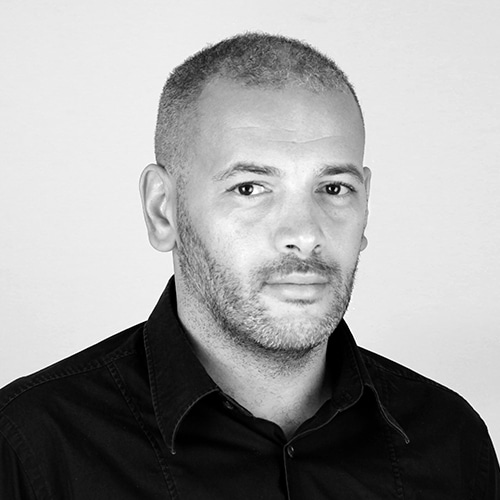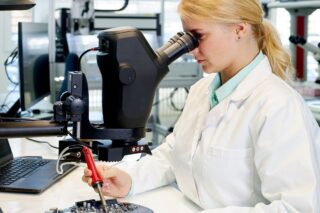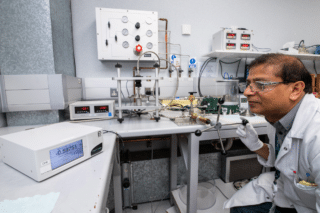IMTS is where you will find the latest innovations in manufacturing. Among the new technologies presented last week, there were efficient and ultra precise machine tools, machining centers working with cobots and hybrid machines with 3D printing capabilities. We also discovered a new affordable manufacturing solution for making metal parts without using any dies. This process, which is completely unique, enables metal sheet panels to be digitally formed at a low cost. At IMTS, we spoke with Justin Nardone, CEO and founder of Figur, the company behind this new digital sheet forming technology, to find out more about the process.
Figur G 15 has just been released on the market. Its specificity is to digitally form metal parts from a flat sheet without using any dies and without having to change tools, explained Justin Nardone, CEO and founder of Figur.
“We create parts from metal panels and we are able to create all sorts of different shapes for architectural parts, aerospace, and automotive uses. We just have to make a digital change in the programming. We don’t need to change any tools in the machine.”
No Dies Needed
In the manufacturing industry, in order to form a part from a metal sheet, a die must first be formed with the shape of the part. The punch and tools used to make the part must also be fabricated. This process is very expensive as tooling and dies are very expensive. A die set for example can cost up to 500,000 USD.
Once the tools are ready, they are placed in a press, the sheet metal is inserted and the punch goes down into the die and hits the sheet metal to form the part. This process is not only expensive, but it is not flexible because it only allows the production of the same part. To make other parts, you have to make other dies, other punches and other tools. The main advantage of this process is its speed.
Figur aims to address the cost problem by offering an affordable metal forming solution so industrial players don’t have to invest in expensive tooling sets
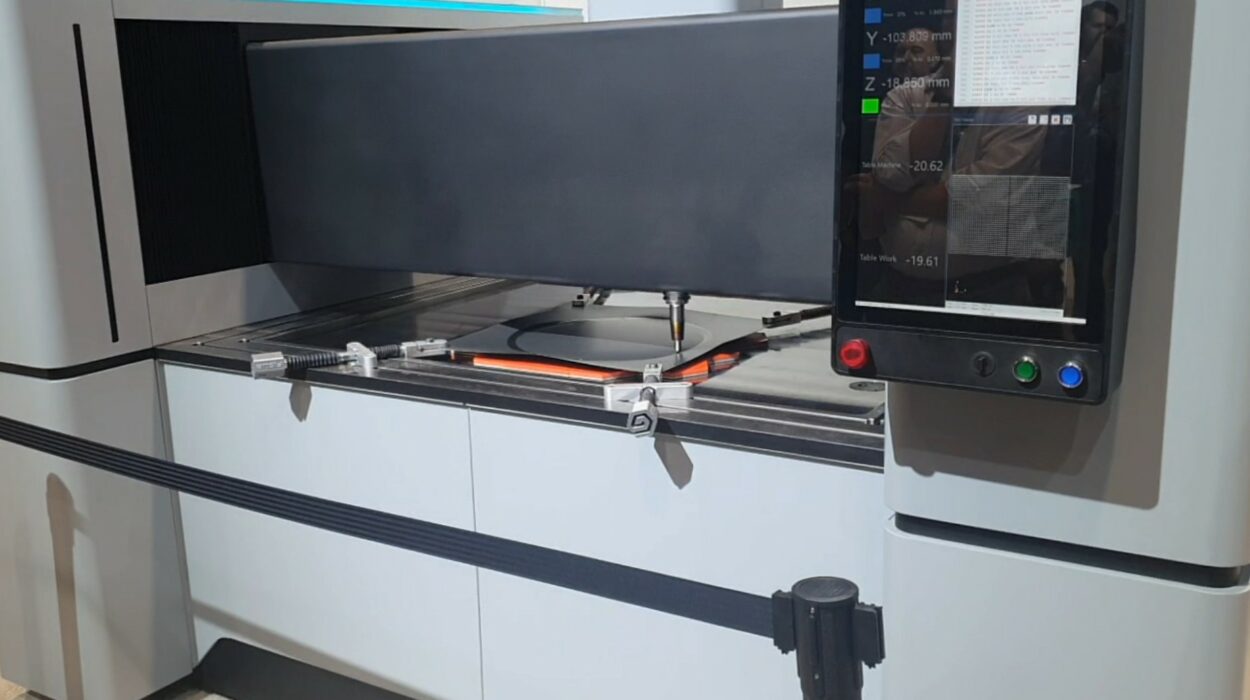

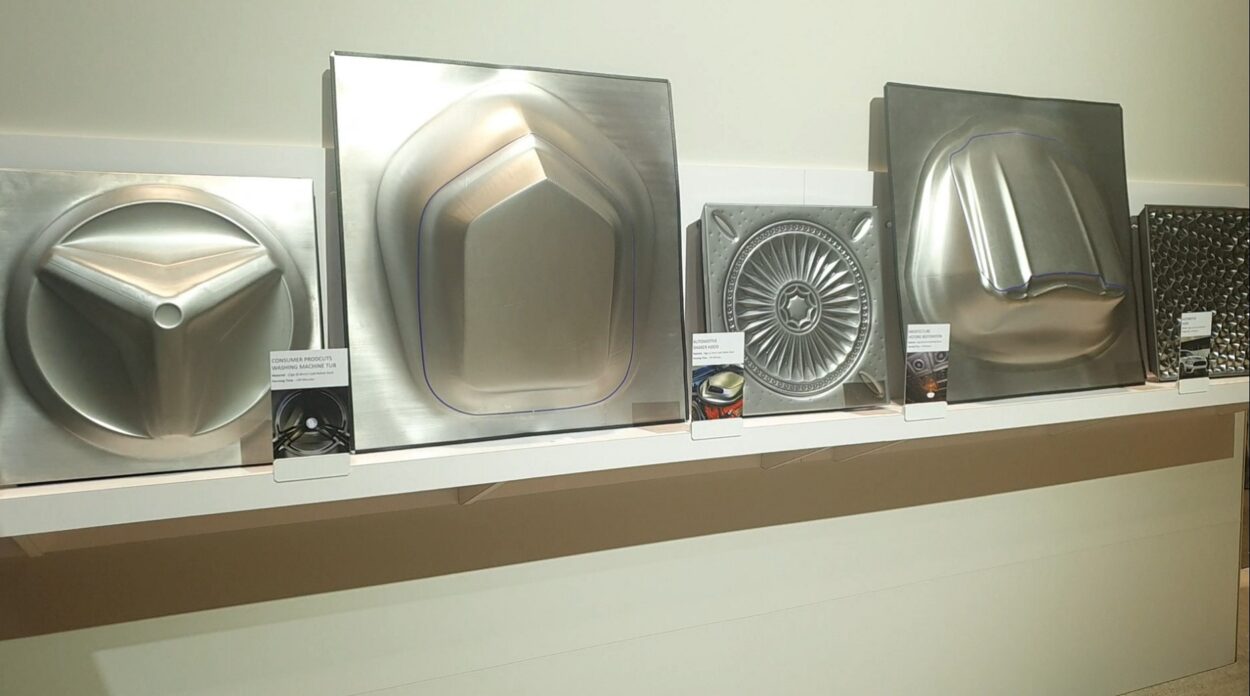
Forming Metal Sheets Layer by Layer
Everything starts with a 3D drawing of the part that is sent to the machine, just like for a 3D printer.
“Then, we insert a flat sheet of metal into the machine and we run the program. The sheet is about 2 mm thick. A ceramic tool then presses the sheet into layers, until the final part is obtained. The program forms the sheet by pressing it down into layers but with no dies.”
The process looks a bit like the classic one as it means forming the sheet metal. But the formation is done level by level, a bit like in 3D printing.
The advantage of this system is that it is cheaper and more flexible than classic metal forming. You can create different parts and use different types of metal with the same machine.
Figur can handle titanium, copper, stainless steel and aluminum,
“This is a completely digital process, totally flexible. You can be making a car fender in the morning and switch to an aerospace part in the afternoon without having to change any dies.”
The main disadvantage is that, like 3D printing, the process is longer because it is done layer by layer. According to Mr. Nardone, forming parts can take from 20 minutes up to 2 hours, depending on the geometry of the part and how deep it is.
Digital Manufacturing
Is this a 3D printing process or a machining process? Figur is part of a 3D printing group, Desktop Metal, and it is no coincidence that their technology resembles 3D printing.
Both processes are based on digital files.
“By changing a digital file, it is possible, for example, to 3D print various plastic parts with the same machine. It’s kind of the same thing here but with sheet metal parts.”
However, unlike additive manufacturing, no material is added to make the part that is formed directly from the original flat metal sheet.
“We are not building up from a powder or from melting materials. It’s in the same spirit as 3D printing. We call this process digital manufacturing.”
A software pack comes with the machine. It provides guidelines on what the machine can and cannot form.
Other Applications
One of the secondary processes for Figur G 15 could be mold manufacturing. Making molds is also generally a very expensive process. But with this machine, it could be possible to form cheap metal molds for the architecture industry for example.
The technology could also be integrated into other processes. Figur is currently working with other partners to implement the process into automated assembly lines.
Mr. Nardone also believes the process will get faster in the future.
In the meantime, Figur G 15 is manufactured as a turnkey solution that can directly be put on a machine floor and start making parts.
Its price is a little under 500,000 USD and it comes with the software and ceramic tools. Other tools are available as options.
The first machines are expected to be shipped at the beginning of 2023 in the United States.
![[IMTS 2022] A New Affordable Manufacturing Solution for Metal Forming](/wp-content/uploads/sites/3/figur-machine-1250x709.jpg)
